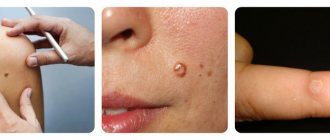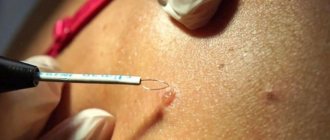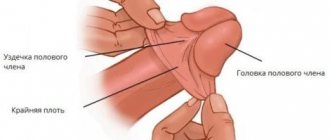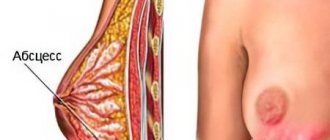Methods for removing tumors
Depending on the clinic, patients are offered various ways to combat the external manifestations of HPV.
Removal methods:
- Surgical.
- Laser removal.
- Electrocoagulation.
- Radio wave therapy.
- Cryodestruction.
Surgical excision is performed if degeneration of papilloma is suspected. To make an accurate diagnosis, the removed tumor is sent for histology. It is not possible to study the material using other methods of exposure.
Laser removal is considered the most attractive, as it is characterized by minimal intervention. The specialist determines the power and depth of the impact, so healthy tissues do not suffer. The wound heals after this method in just ten to fourteen days, which attracts many patients. In addition, the likelihood of scar formation is minimized, which is important when removing tumors in the facial area.
Types of formations
Today, there are more than 170 types of papillomavirus, although all neoplasms are caused by one pathogen.
Papillomas are classified depending on the type, location and route of infection:
- Vulgar papillomas are most often localized on the sole, between the fingers, on their dorsum or palmar surface. They also often form around the chin and lips. Initially, a small spherical papule appears. After a certain period, it increases in size, becomes rough, and acquires a darker shade.
- Filiform papillomas - acrochords . Skin neoplasms are elongated or round in shape on a thin “leg”. This makes it possible to distinguish acrochords from other types of warts. Threaded papillomas do not appear in children; most often they are observed in people after 40 years of age. They usually form in the groin and armpits, on the eyelids and neck, and in females they can also appear under the mammary glands. Sometimes acrochords are formed in folded areas characterized by increased sweating.
- Condylomas acuminata have a papillary shape with a pointed end, flesh-colored or pink. Their structure is similar to acrochords - this is evidenced by the presence of a thin “leg”. Most often they appear when the virus enters the body through sexual contact; quite rarely, infection occurs through ordinary contact, so most often growths form in the perineum and genital area. Rarely, but they form on the cheeks, lips and mouth. Among all the varieties of warts, these are the most dangerous. Doctors do not exclude the possibility of their transformation into malignant ones. They cause discomfort in a person during sexual intercourse and when walking.
- Flat papillomas are very similar to ordinary moles, and their shade is close to the color of the skin. They can form in absolutely any area of the body: on the genitals, limbs, torso or face. In adolescents and children, flat papillomas most often form. They are also called juvenile warts. They disappear on their own with age, so there is no need to remove them immediately after they appear.
- Plantar warts . The lesions can often be found on the palms, toes and soles. Rarely, such warts appear in the back area. You don’t have to get rid of them; they will disappear on their own over time.
What happens to the wound after papilloma removal
The first few days there is an open wound on the skin, which becomes a source of potential threat. To reduce risks, you need to know how the wound behaves and how long it takes to fully recover.
First, severe inflammation and slight swelling occur at the removal site. They pass within a day, sometimes two days. Then a scab begins to form, that is, a small crust that performs protective functions. Thanks to it, the likelihood of infection entering the wound opening is reduced. If crust formation does not begin, you should definitely visit a specialist. Also, the attending physician can tell you what to do after removing the papilloma in each specific case. However, there are general recommendations that will help reduce the likelihood of complications.
Need to see a doctor
Most skin tumors are benign. Nevi are not dangerous to human health. If you find suspicious formations on your body, consult a doctor immediately.
Elimination of papilloma without medical indications is possible. The reason for this is psychological discomfort and the negative appearance of the structure on the human body. A malignant tumor is localized in the cells of the integument, forming metastases at lightning speed. Secondary foci of pathology are possible due to poor-quality surgery. The body should be cleansed of papillomavirus systematically.
Statistics say that in 40% of women the disease develops on the legs. Half of men suffer from a disorder on the skin of the trunk. To prevent the development of the disease, prevention of HPV infection is carried out. Doctors recommend not to overuse solariums and tanning on the beach.
The article has been reviewed
by the site editors
General recommendations
Some people immediately return to their normal lives after getting rid of an annoying cosmetic defect. They forget that the area of intervention requires competent care, on which human health depends. In the most unfavorable cases, you can provoke the development of skin cancer, which, even with the modern level of medical development, is difficult to treat.
What not to do:
- Wet the wound after removing the papilloma.
- Apply tonal and cosmetic products to the damaged area.
- Expose the injured area to sunlight.
- At first, visit baths, saunas and public swimming pools.
- Cover the wound with an adhesive plaster or apply a bandage.
- Remove the crust yourself.
If you tear off the scab prematurely, you can cause scar tissue to form. When visiting a bathhouse or public swimming pool, the risk of infection increases. Sticking the patch prevents the formation of a crust, which protects the new skin from damage. Also, you should not rub the wound with a pumice stone or scrub, as the delicate tissues will be injured. All this greatly slows down healing, which takes months.
Causes of tumor appearance
The main causes of infection with the virus are considered to be sexual intercourse, physical contact and sharing objects with an infected person.
It doesn’t matter what type of sex you prefer - classic, anal or oral, the use of a condom also does not play any role, the process of transmission of the virus occurs through close contact of bodies not covered with clothing.
There is a high risk of infection when visiting public places with high humidity - baths, saunas or swimming pools.
An interesting aspect of the disease is its incubation period - it can last from several months to several years, beginning to develop when the immune system is weakened or the body is weakened due to stress.
In “sleep” mode, the virus is completely safe for others; the risk of infection appears if the patient has warts.
How to treat a wound after removal of papillomas
Many people do not know how to treat a wound after removal of papillomas and how to do it correctly. The reason for the confusion is understandable, since some remedies are too aggressive. The wound they treated begins to peel off, and the recovery process is delayed.
The best option is to treat the wound with iodine or brilliant green. They are considered the safest and do not cause allergic reactions. Some experts advise treating the damage with a solution of potassium permanganate or calendula. Such recommendations are dangerous, since these drugs often provoke itching and allergic reactions.
Cost of a laser session to get rid of papillomas
The pricing of a session will be determined to a greater extent by the number of tumors, and to a lesser extent by their location and size. Clinics set rates based on groups of papillomas: from 1 to 10 pcs., from 10 to 20 pcs. etc. Additional payment will only be required to remove very large growth. Removing a large number of papillomas will be cheaper. There are no seasonal discounts for this type of procedure, since you can get rid of growths at any time of the year.
Important ! The procedures have been streamlined due to the fact that the number of people wanting to get rid of papillomas is not decreasing, which means there is no need to stimulate them with discounts.
The cost of the procedure depends on various factors
We will indicate the cost of such a procedure in different cities of Russia.
| City | Cost of the procedure |
| Moscow | 1200 rub. |
| Saint Petersburg | 980 rub. |
| Voronezh | 1050 rub. |
| Kaluga | 870 rub. |
| Eagle | 700 rub. |
| Arkhangelsk | 830 rub. |
| Vladivostok | 750 rub. |
What can you apply to a wound?
After the crust has disappeared, various medicinal ointments can be applied. The most popular is hydrocortisone ointment. It helps relieve itching that accompanies the restoration of the dermis. Local inflammation and swelling are also reduced. If you don’t know what to apply to the wound, you can safely choose this drug. Moreover, it does not penetrate into the general bloodstream, but only has a local effect.
Methyluracil is prescribed by specialists to treat wounds after removal of papilloma to reduce negative manifestations. The ointment promotes tissue regeneration and has an analgesic effect. For best results, apply this product 2 times a day.
Solcoseryl accelerates regeneration and stimulates local cell activity. Thanks to the use of this product, the appearance of scars and scars is excluded, since solcoseryl is responsible for the production of collagen. If the wound begins to become wet and a protective crust does not form, Solcoseryl gel should be applied. When the protective film appears, switch to ointment.
In order for the recovery process to be productive, it is necessary to use solutions that contain vitamins B and E. To prevent relapses of the disease, a general strengthening of the immune system is required, for which patients are recommended to take a course of vitamin complexes. Be sure to use ascorbic acid, tincture of ginseng or echinacea. Walking in the fresh air and dosed physical activity are a good addition.
Proper treatment after papilloma removal allows you to avoid complications. Within a few months, new skin will form at the site of the skin defect, which will not differ from the surrounding tissue. However, to do this, you should choose a good specialist who will first examine the tumor, identify all the risks and suggest the optimal method of removal. Only with this approach will papillomas not appear again after removal, and the person will not face the serious consequences of improper medical intervention.
Carrying out the procedure
To eliminate tumors, surgical lasers are used, for example, such a well-known device as SmartXide Dot. Such a complex technique must be operated by a plastic surgeon or a specially trained cosmetologist, otherwise the patient’s skin may be burned or some other side effects may occur.
The procedure requires a preliminary examination of the skin so that the doctor has the opportunity to identify all tumors that have appeared on the patient’s face or body. At the same time, you can also get rid of warts, moles and other growths.
Important ! Their removal does not have any special differences in the protocol or requires special conditions for working with them.
It is important that the procedure is carried out by a professional
Painkillers are first applied to the skin. If the patient has severe pain or the removed growth is large in size and localized in a particularly sensitive area, local anesthesia with injections of lidocaine or another anesthetic is recommended, although usually nothing of the kind is required.
After the specialist adjusts the laser power, you can begin the procedure.
Important ! The beam is applied to the tumor in a series of short pulses, as a result of which the growth begins to gradually evaporate.
The session cannot be called particularly painful, but the patient still experiences a slight pain syndrome. Even with good anesthesia, you can feel the same pain as with a mild burning sensation or acupuncture. You should be prepared for the smell of burnt leather, which even the powerful ventilation of a specially equipped room cannot quickly dissipate.
Some discomfort may be felt during the procedure
To remove one growth, it takes from a couple of seconds to a couple of minutes - it all depends on the location of the tumor and its size. You can remove the growths one by one.
Important ! In one procedure you can get rid of up to several dozen growths.
At the end of the procedure, all treated surfaces are treated with antiseptic solutions. For large wounds, it is worth applying a bandage with a regenerating agent, such as Levomekol. After the procedure, the patient is sent home.
After the procedure, the skin is treated with Levomekol.
How is surgical excision of papilloma performed?
Removal of rosacea vessels WITH LASER Reviews needed
Before the doctor prescribes surgery, the patient must undergo a full examination. Usually, in addition to standard tests for general analysis and blood biochemistry, urinalysis, a histological analysis is also taken to determine the nature of the neoplasm (whether it is malignant).
Once it is determined that the nature of the neoplasm is non-cancerous, a day and time for the operation are scheduled.
Removal of papillomas by surgery is a simple surgical procedure and is performed under local anesthesia. Before the operation begins, the area around the papilloma is treated with an antiseptic and injected with an anesthetic. After the anesthetic begins to take effect, the surgeon excises the tumor with a scalpel and performs procedures aimed at cleaning the excision site.
After that, stitches are applied, which are subsequently removed after 10–14 days. If the affected area is large, then to prevent the formation of a large amount of scar tissue, a piece of the patient’s skin taken from another part of the body, for example, from the abdomen, is sewn onto the sites where tumors are excised. After surgery, the patient remains in the hospital for approximately 2 weeks or until the stitches are removed.
Excision of papilloma with a scalpel during surgery is, of course, more traumatic than removing them by burning them with liquid nitrogen, electric current or acid preparations, but the effectiveness of this method is almost 100%, whereas after other procedures the growth may form again in the same place.
Sometimes it happens that after non-surgical treatment methods the papilloma has grown again, then the patient is offered to remove the tumors surgically. Of course, patients who hoped that surgery would not be needed in their case are frightened by such news. But this is completely in vain, because an experienced surgeon removes such problems, leaving virtually no traces.
In order to perform surgical excision of a papilloma, which, according to test results, turned out to be malignant, a number of additional examinations and procedures will be required. The first thing doctors will prescribe is a tomography of the internal organs to check for metastases. If metastases are not found, then the next step will be to irradiate the malignant tumor using radioactive radiation and a course of chemotherapy. If these procedures have a positive effect, surgery will be performed to remove it.











